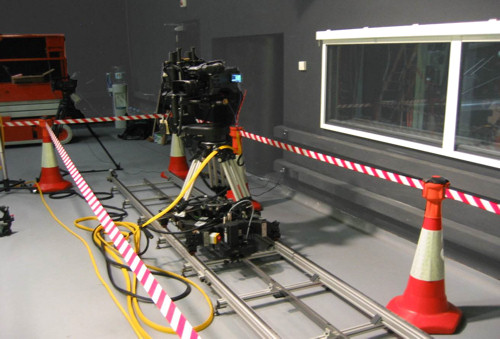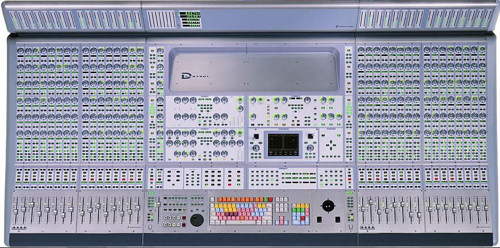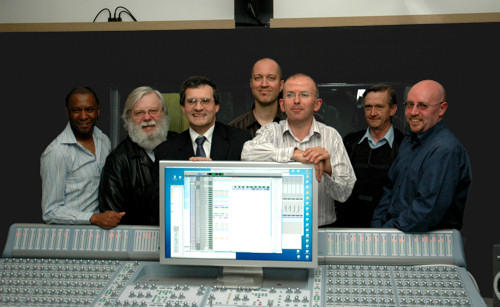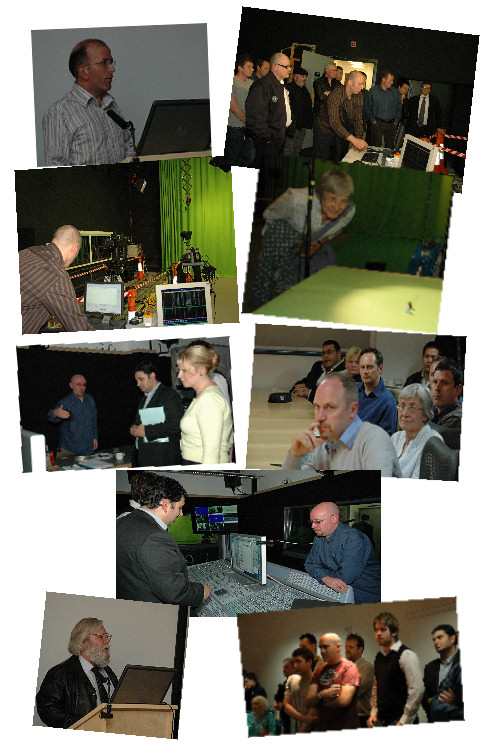Graeme Aldous reports on Teesside's latest audio-visual facility.
I owe Middlesbrough a great deal — it was coming to work here in the 70s that introduced me to the wonderful part of the world that became home, and Teesside is a region that's provided me with work for nearly 40 years. But with the honesty that can come from great affection, I'd be the first to admit that (professionally) Teesside comes second to Tyneside for facilities, and the journey up the A19 is often a necessary part of working here.
Or at least, it used to be. When you find yourself taking part in an impressive demo of a motion control camera rig in a big green-screen studio that can't be matched within a hundred miles… and that's alongside an audio post-production studio the likes of which you've never seen before, then you know that the times they are a-changin'!
The University of Teesside is justifiably proud of its pioneering School of Computing, which in 40 years has developed from teaching basic programming to animation, games, web and the broad digital area. The latest project to be completed involved an investment of £20m by the University, with help from ONENorthEast, and included a state-of-the-art audio and video-based facility set around a sound stage with green screen/blue screen abilities within the Phoenix Building
The Green Screen Studio
A two-story high sound stage was opted for, with a separate sound booth and combined audio and visual control room. Post production specialist Simon McKeown and audio specialist Jay Chapman were asked by UOT to design the Phoenix studio, and it was them who addressed a North East & The Border Centre visit in May, promoted by installation sub-contractor David Girdlestone (F451.tv).
Motion control camera rigs allow a camera to repeat a move/zoom etc over and over again. Combined with green screen techniques, complicated layers of video can be built up without the camera having to be 'locked off' in one position. A simple example can be to allow the same actor to appear more than once in a scene, but the potential use within virtual studios etc are limited only by the imagination.

The Motion Control Rig
The Phoenix Studio uses a Mark Roberts UltiHead to control the movement, roll and pitch, zoom and focus of a Panasonic HVX 500 camera. The studio can be set with the background curtains as 100% green, 50% blue or 50% black, and the floor can be green or blue. There's also an additional Reflect Media Blue Screen facility for close-up work.

The Digidesign ICON D-Control Desk
But the studio isn't just for green screen work — it's also a sophisticated sound stage, based round a Digidesign ICON D-Control Desk. This is the only desk of its kind in a UK educational institution, and is of the type used for major productions such as Harry Potter 6, The Bill and East Enders. Jay Chapman refers to it as "The most expensive mouse in the world!" because it's not so much a conventional mixer (that manipulates the sounds internally) as an interface for a computer-based system that responds to the desk's controls. And as a party-piece, it can be put into 'Vegas Mode' (as in 'Las Vegas'), with every available light flashing and faders zooming up and down. It looks impressive, but it has a practical use as a way of checking that everything is working and indicating as it should.
The studio can record up to 16 microphones, and the associated sound booth will handle 8, so allowing a wide range of performers (musical and vocal) to be controlled at once, from an orchestra to a complex post-produced commercial or film. The audio software behind the studio is Pro Tools HD.

The Phoenix Studio Team
So (to put it frankly) what is the point of all of this sophisticated technology being installed in a university, rather than a 'professional' post-production facility? Well, as the Dean of the School of Computing Dr Derek Simpson explained, for the University to maintain its position as a leading educational establishment in its field, it must be able to educate its students to the highest technical standard — not much point in using only the most basic technology when they'll be seeking jobs in an industry where they'll need to have knowledge of the best.
And this can benefit the region's professionals, who are encouraged to book the facilities. After all, to educate the student users of the Phoenix Studio there needs to be a professional user base who can give them someone to work with. I personally wonder if there isn't quite a tightrope to be walked between the educational aspects and the need to recoup some of the £20m investment, but what the heck… with such professional facilities now available in Teesside, it may be the turn of the Newcastle industry to make the A19 journey for a change!
More images from the event:


